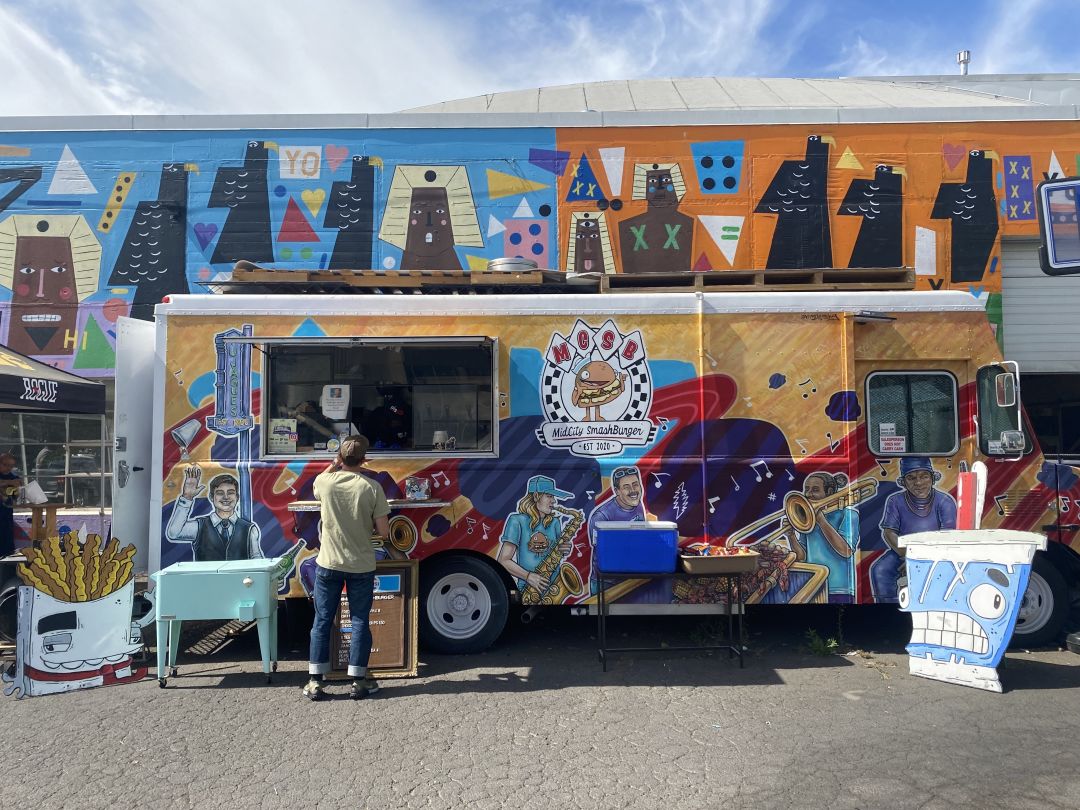Are $5 Cheeseburgers Gone for Good?

A smashyboi from MCSB
Image: Jordan Michelman
At the outset of the pandemic, Mike Aldridge sold $4 burgers off his porch in the Mid-City neighborhood of New Orleans—his way, he says, of doing what he could to help people get by in hard times. Pre-COVID, Aldridge cooked at some of Portland's ritziest hotel-restaurants. And when word spread about his adamantly no-BS burgers, an offer came to bring them out west. Halfway through 2020, Aldridge came back, burgers in tow, and opened Mid-City Smash Burger (MCSB), a food cart named for his former stomping grounds. The Rose City leaned in, eating up to 300 “smashy bois” from the SE Stark cart daily.

Mid-City Smash Burger
Image: Katherine Chew Hamilton
In MCSB's new, slightly more elevated surroundings, backed by a punk rock aesthetic and jingly abbreviated name reminiscent of CBGB’s, burgers now cost $5. The number became a symbol of the business. A meme Instagram post of Kanye holding a legal pad read: “MCSB serves the best $5 cheeseburger in Portland. My next song will be about smashy bois and I’ll pay them royalties.” With Ye's endorsement, MCSB quickly expanded, opening a second cart in the North Williams Cartside pod.
Fast-forward to July 10 of this year, and a black-and-white photo of Aldridge hits MCSB’s grid. He’s in a straw hat and Hawaiian shirt, riding a skateboard, holding a spray-painted $5 cheeseburger sign. The in-memoriam caption reads: “This will be the last week for the $5 smashy boi.”
“That was one of my things that I tried to establish from the get-go, that it will never be more than five bucks,” says Aldridge. When MCSB opened in January 2o21, Aldridge had good margins on the $5 burger. In spite of the cart's continued success (his third truck opened in Bend last week), he says five bucks is "just completely unfeasible with the current prices of things.”
Many restaurants have turned to social media to show the rising costs of the products their businesses depend on. For a customer, the sticker shock of lunch costing more than it ever has makes the headlines about inflation and food shortages caused by faraway wars hit home. Business owners are in a lose-lose situation: their costs are rising, but hiking menu prices to compensate could alienate customers.
“If something goes up 50 or 75 percent, I can’t raise my prices the same percentage,” says Aaron Tomasko, who sells nostalgia-steeped latkes with his wife, Rachel Brashear, at food cart Sweet Lorraine’s. Ultimately, they just take home less, a trend Tomasko says is consistent with their friends in the industry. “Last year, we paid ourselves less than five dollars an hour,” he says.
The most notable cost increase of late may be fryer oil. MCSB's fries and "nuggs" don't happen without it, and you can bet Lorraine's heirloom latke recipe doesn't futz with airfryers. There’s no ingredient less sexy or marketable, but fryer oil is as essential as towels and cleaning supplies. And just like towels and cleaning supplies, nobody wants to pay for it.
Vegetable oil is used in everything from cosmetics to fuel to chemical refining to, of course, a gauntlet of culinary applications. A South American drought made for a poor soybean harvest this year, and a spike in sunflower oil prices—due to its almost exclusively Russian and Ukrainian production—has jumped the already stretched cost of vegetable oils up 45 percent inside of a year, and 150 percent in the past two years, according to the Washington Post.
Complicating matters further: After COVID reckonings, chefs and owners are more aware than ever of the need to provide living wages to their staff. Restaurants have always run on razor-thin profit margins (5 percent on the best of days), and inflation just exacerbates the issue.
“There’s a million things that play into it, and it’s a lot deeper than two years,” says Aldridge. The conversation surrounding it, though, he says, is relatively new. “This didn’t happen a lot five years ago. It was ‘this is what it is.’ But it’s gotten so bad so fast that we’ve had to be vocal about it.”
Both Lorraine’s and MCSB hold accessibility at their core. “From the get, it was just me wanting to offer something that 99 percent of people could get,” says Aldridge.
“The day that I can’t feed a hungry neighbor is the day that we’re done,” says Tomasko.
That said, Aldridge has found Portlanders are understanding of the change. In fact, the now $6 smashy bois drew a surge of business. And comments on the heart-poured-out Instagram post applauded the change: “y’all deserve every damn penny you charge.”
Tomasko says Lorraine’s hasn’t had a negative reaction from customers to higher prices, either. However, prices have been adjusted to what they felt comfortable charging, not what they needed to make ends meet. "They’re not really comparable to how much our costs have gone up. We just decided to do a slight increase across the board, instead of actually saying, well, we use oil in that so we have to double that, you know?"
Aldridge says he’s glad he ripped the Band-Aid off when he did: “To keep a burger at five bucks was going to be suicide in the next year ... we would have imploded.”
But how far can one dollar go? Does a 20 percent increase resolve the issue? Aldridge says that they’ve been a nickel-and-dime business from the start, so the dollar is more significant than it may be for other models. And if MCSB is selling 300 or so burgers in a day, it adds up.
“We still offer the same good meal and the same good time, it just costs a couple bucks more now,” says Aldridge. “We’re sorry, but we have to make a living, and we gotta pay our employees.”




